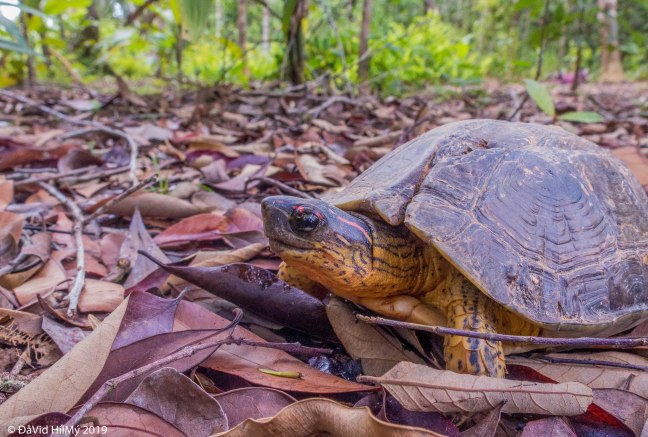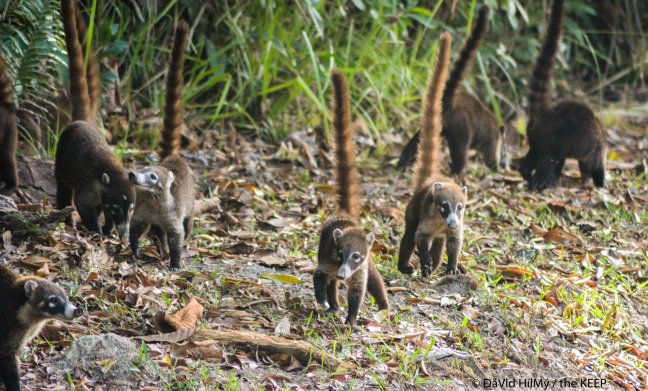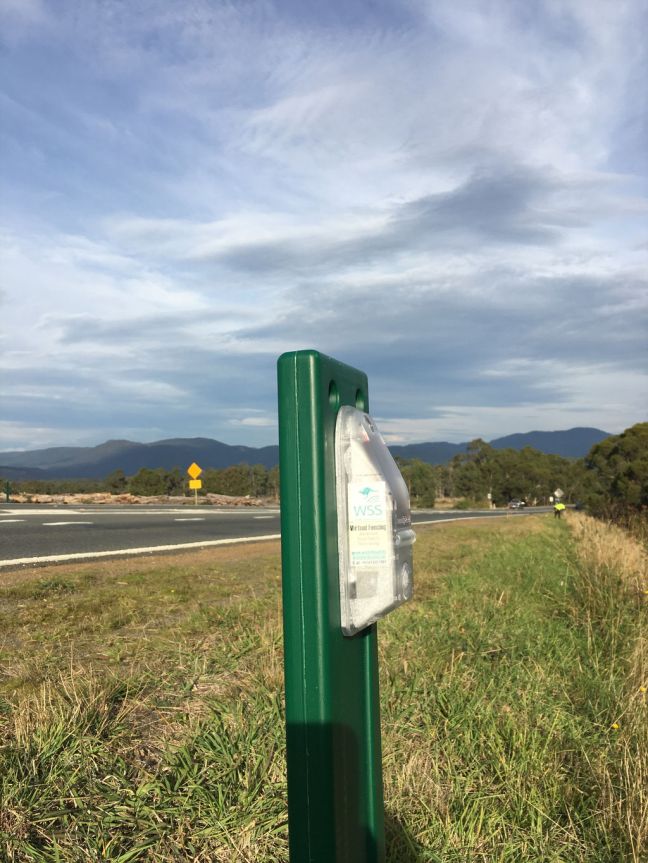No, this post is not really about turtles necessarily, but here is one of the many species that cross our roads seeking the last vestiges of fresh water as the dry season takes its toll on the land, but too, when the rains finally come, turtles are again on the move to wherever fresh water gathers.

In an oft-used meme, a picture of a deer is portrayed with the words “the deer isn’t crossing the road, the road is crossing the forest.” This holds true for all our wildlife that routinely travel relatively large distances seeking food or water, through a landscape fragmented by the cross-cross of roads- that fox that just ran across All Pines may be one of several that cross this road today, in search of food to take back to its den with newborn kits, perhaps crossing three or four roads, twice, to secure that one important meal.
Certain bird species often sit in the road here: Brown Jays, Common Chachalacas, and surprisingly several woodpecker species too- indeed, we are now beginning to document parrots upon the road chewing clay, probably to neutralize toxins that they may have ingested as they forage for wild fruits.

Visitors and residents will have noticed that we’ve begun to install speed limit signs, the first ten kindly donated by the builder Elvis Neal of BSB Construction*, with 25mph now posted on Marina Road, MotMot and Euphonia Rds in Sanctuary Estates, Chachalaca Rd on the way to the Beach Club, and the main road through Sapodilla Ridge. Yesterday we finished installing a further set of 25mph on the main road through Equestrian Estates, and along the construction road which crosses the Chachalaca Flowover, as well as new 30mph signs on All Pines Rd; I’m hopeful that it will at least remind drivers that we are in a wildlife reserve and to be honest, at 30mph it only takes 6 minutes to get from the highway to our first Security booth on Marina Rd- only 6 minutes!

With the increase in boat traffic from the marina to the Beach Club, we’ve also made a concerted effort to add more “No Wake” signage (a mandatory element of the Marina ECP) as well as reminding boaters we are in a Marine Conservation Zone, where in addition to the occasional American crocodile, we also have dolphins and sea turtles that visit Sapodilla Lagoon, and in our inner channels, from the Beach Club all the way to the westernmost Sapodilla islands, we often have manatees too!
Baby coatis and peccaries freeze when faced with oncoming traffic, and those animals seen on verges like agoutis, pacas, and Grey foxes, may sometimes scamper across a road if suddenly frightened.

Of course we can all agree that the slower one goes, the less likely such an unfortunate accident might occur, but one piece of research importantly suggests that birds do adapt to speed limits, judging their “escape” time based on anticipated speeds– driving faster than these speeds can catch out even the most alert.

Across Belize, one of the critical issues we need to deal with is wildlife crossings at night- of course this applies to SRWR too, with jaguars, tapirs, and tamandua all out and about after dusk. One solution, successfully trialed in Australia, is the use of virtual fencing devices such as the DD420 and DD430 invented by Wildlife Safety Solutions which provide both a bi-colour and acoustic alarm triggered by incoming headlights from as far away as 300m. We are currently looking in to piloting such a scheme at the reserve, with a view to perhaps encouraging the Forestry Department to adopt such measures in other high-volume traffic areas in the country.
To adapt that line from Spiderman, living in a wildlife reserve brings great responsibility, that of taking whatever precautions are necessary to avoid hitting wildlife on our roads- staying vigilant, being respectful of the animals with which we share our space, and of course, obeying the speed limits.
Don’t miss out on previous stories- follow the entire blog here!
*BSB is one of two construction companies, the other being Tata Duende, to have already earned “Eco-Points”, a new initiative whereby builders can be awarded credit for donating materials or labour towards wildlife conservation projects, such reports filed with the Architectural Review Board (ARB) for when owners start to choose builders for their homes. BSB has earned 2 points so far for the signage and construction of a shadehouse for hardwood saplings; and Tata Duende has earned 1 so far, for donating a truckload of sand to help with the construction of the fitness trail in the Northridge Conservation and Fitness Park.

